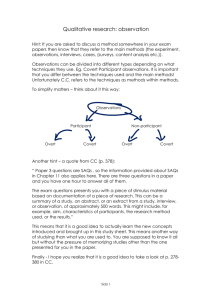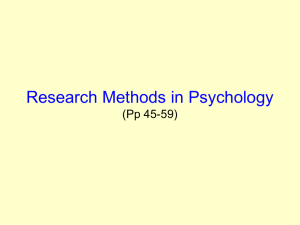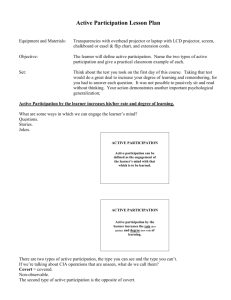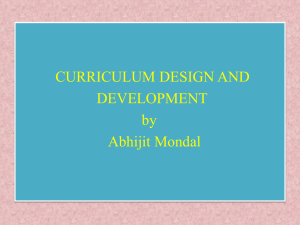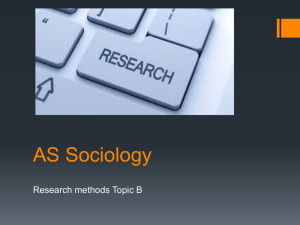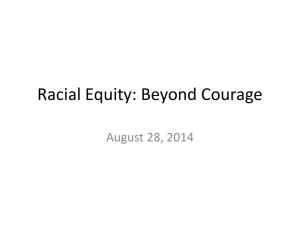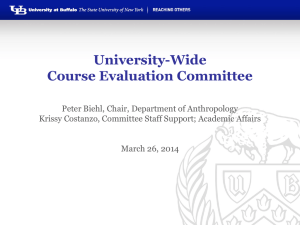Active Participation Covert / Overt
advertisement
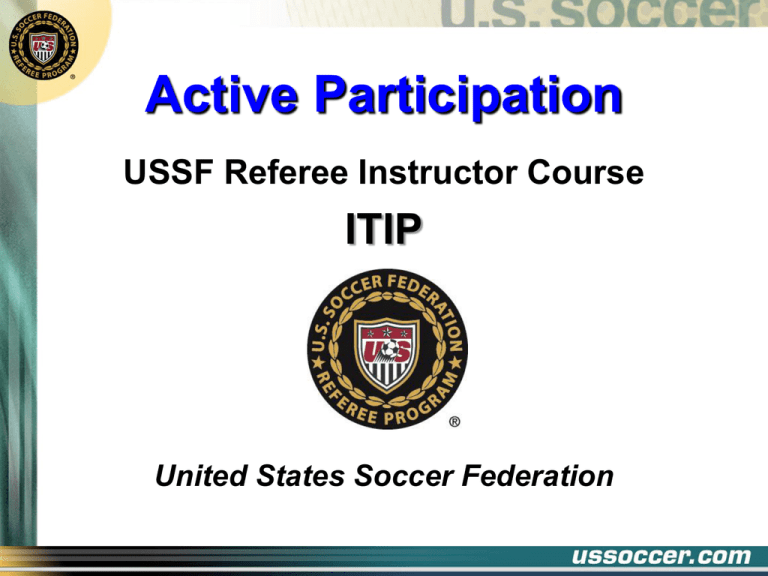
Active Participation USSF Referee Instructor Course ITIP United States Soccer Federation Active Participation Lesson Set Picture the last referee recertification test that you took. Did taking that test cause you to think, to remember and/or increase your knowledge to some degree? It was not possible for you to passively sit and read without some amount of active thought. The test served as a tool to get you to actively participate in the learning process. Active Participation Lesson Objectives At the end of this lesson you will: • Define Active Participation • Name the two types of Active Participation • Indicate the type of Active Participation from a list of examples Active Participation Definition The engagement of the learner’s mind with that which is to be learned. Active Participation Definition • A teaching strategy that improves an instructor’s effectiveness • Helps keep the mind of the learner on the objective of the lesson • Involves consistent relevant engagement of all the students in the lesson and the process of learning Active Participation Active Participation by the learner increases …. the rate (how quickly) and the degree (how well) of the learning. Active Participation • I see … I forget • I hear … I remember • I do … I understand Active Participation What are some ways in which we can engage the learner’s mind? Questions Stories Jokes Active Participation Responsibilities of the Instructor • Engage the brain of the learner • Create relevant learning activities • Engage students consistently throughout the lesson • Involve all students Active Participation Two Types of Active Participation: Covert - non-observable … unseen participation by student is unknown Overt - observable …. measurable you can see or hear if student is participating Active Participation Covert participation • Demands wait-time Instructor cannot ask students to think of something without giving them time to actually do it. Active Participation Covert participation • Must be relevant to learner Instructor cannot ask students to picture something that they don’t know. Ex. If students were asked to picture “the hand of God” soccer play ,some would be able to see it in their mind, the rest would have no relevancy or understanding. Active Participation Covert participation • Must increase learner’s level of concern Students must feel that if they don’t participate, they will suffer the consequences. Active Participation Covert participation • Must be elicited by the teacher Instructor has to ask the students to think, to imagine, to picture, to remember, etc. in order for them to begin the process. Active Participation Overt participation • No wait time needed Immediate response can be expected and measured. Instructor can see which students are responsive. Active Participation Overt participation • Must be relevant to the learning Creates a level of concern and students are more inclined to be attentive. Active Participation Overt participation • Elicited by the Instructor Using words like show me, write, raise your hand, tell your neighbor, stand up. Need not always be an individual response … group response just as effective. Active Participation Covert / Overt The use of COVERT and OVERT together holds the student responsible and accountable for their covert actions …. and increases the quality of their overt response. Direction is given for a covert activity … allows thinking time … followed by the instructor directing the overt activity. Active Participation Active participation is the number one way to help with discipline and behavior management. If students think you’re going to call on them for an answer, they will concentrate on your question rather than pursuing other activities. Active Participation Actions that promote Active Participation • Get in the habit of calling on all students rather than “volunteers” who raise their hands. • “Everyone write down …” • “Think of the last time …” • “Show … the direction of the throw-in” • “Hold up your hand” • “Discuss in your group” • Monitor the students for appropriate responses Active Participation Actions that hinder Active Participation • • • • • Straight lecture …. boring Calling on the same people Calling students in order Sending one person to the board Calling out a student by name prior to asking a question …. lets everyone else off the hook. • Saying “who can tell us? • Answering your own question … not leaving some wait time Active Participation Lesson Assignments Write out the following and bring to the in-class sessions: • A definition of Active Participation in your own words. • List the two types of Active Participation with a specific example of each. • Indicate the type of Active Participation for each of the 10 directions stated in the “Type of Behavior Quiz” shown on the following slide. Active Participation Type of Behavior Quiz 1.____ jot down the answers in your notebook … 2.____ summarize to yourself … 3.____ make a mental list …. 4.____ give some thought to … 5.____ hold up your pencil … 6.____ discuss in your group … 7.____ show me two fingers … 8.____ draw a picture in your mind … 9.____ think of another example … 10.____ whisper to your neighbor … Active Participation USSF Referee Instructor Course ITIP United States Soccer Federation

